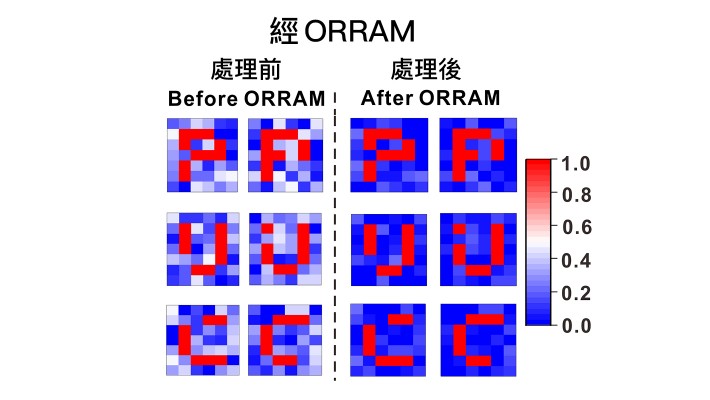Novel optoelectronic device works like human retina - PolyU research published in Nature Nanotechnology
In everyday life, we are surrounded by technologies that utilise imaging systems, such as cameras and CCTVs. However, the complicated circuitry design entails large data storage space and high power consumption. Inspired by how the human retina works, a PolyU research team led by Dr Yang Chai of the Department of Applied Physics has developed an optoelectronic device that mimics the retina’s image sensing, memorisation, and pre-processing functions, with image recognition accuracy and efficiency exceeding existing artificial visual systems. The related research paper was recently published in the internationally prestigious journal Nature Nanotechnology.
How human beings process visual stimuli
When light enters the human eye through the cornea and lens and focuses on the retina, the sensory neurons in retina respond directly and perform the first stage image processing. Then, the preprocessed information enters the visual cortex of the brain through the optic nerve for more complicated signal processing.
Limitation of artificial visual systems
Today’s artificial visual systems mainly consist of photoreceptors (to perceive the visual inputs as digital images), a memory unit (to store visual information), and a processing unit. Unlike the human retina, the units cannot respond directly to optical stimuli. Image sensor arrays are needed to convert optical signals to electrical ones for further processing. Such complicated circuitry design generates a lot of redundant data which occupies large amount storage space, with high power consumption.
The novel ORRAM synaptic device
The research team set out to design an optoelectronic resistive random-access memory (ORRAM) synaptic device with a two-terminal structure of Pd/MoOx/ITO (palladium / molybdenum-oxide / indium tin oxide). It can sense optical signals (ultraviolet light) directly, and integrate sensing, memory and processing functions more efficiently.
Experimental finding indicated that the ORRAM arrays can mimic human retina in performing first-stage image processing functions, such as contrast enhancement and noise reduction. The team transferred these pre-processed images to artificial neural network to conduct tests on image training and recognition. Results revealed that in comparison with images without being pre-processed by ORRAM, the recognition efficiency (including processing speed and energy consumption) has largely improved by 41.5%.
Future usage
The above findings have demonstrated the ORRAM device’s great potential in enhancing neuromorphic visual system by simplifying the circuitry and efficiently processing an overwhelming amount of dynamic visual information. By greatly reducing the amount of hardware and power consumption required, this innovation will provide new dimensions to the development of edge computing and Internet of Things.






